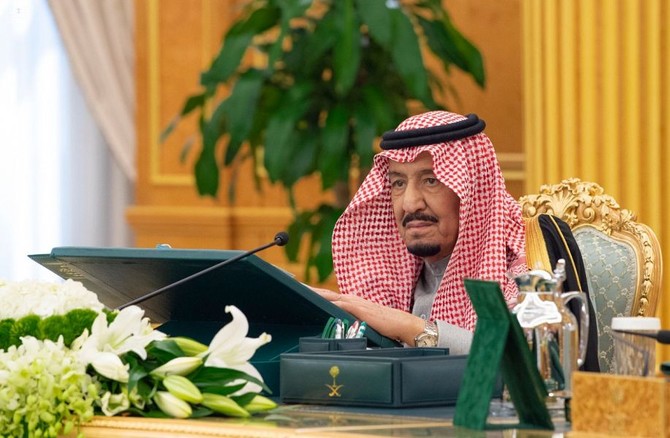JEDDAH: Saudi Arabia’s Minister of Transport and Logistic Services Saleh Al-Jasser received the first group of Hajj pilgrims on Tuesday at King Abdulaziz International Airport in Jeddah.
The flight, carrying 396 pilgrims from Dhaka, Bangladesh, was one of several scheduled to arrive at Jeddah airport and Prince Mohammed bin Abdulaziz International Airport in Madinah.
Al-Jasser said: “Six main airports have been allocated to serve the pilgrims: King Abdulaziz International Airport in Jeddah, Prince Mohammed bin Abdulaziz Airport in Madinah, Prince Abdulmohsen bin Abdulaziz International Airport in Yanbu, Taif International Airport, King Khalid International Airport in Riyadh, and King Fahd International Airport in Dammam.”
He said flights will continue until the beginning of Dhul Hijjah, supported by an integrated system of services to ease pilgrims’ journeys from arrival to departure, reinforcing the Kingdom’s leadership in serving the Two Holy Mosques and worshippers.
In another flight from Bangladesh, 414 pilgrims arrived at Jeddah airport and were received by Bangladesh Ambassador to Saudi Arabia M. Delwar Hossain and officials from both countries.
The envoy extended his best wishes to the arriving Hajj pilgrims and assured them that the Bangladesh Embassy, consulate, and Hajj mission are always available to support them if needed.
The pilgrims expressed their gratitude for the warm welcome and efficient arrangements at the airport. A total of 87,100 people from Bangladesh are expected to perform Hajj this year.
The first flight carrying 442 beneficiaries of the Makkah Route Initiative from Islamabad, Pakistan, arrived in Madinah on Tuesday.
More than 89,000 Pakistani pilgrims will travel under the government’s scheme during Pakistan’s 33-day Hajj flight operation.
Pilgrims will travel to Makkah and Madinah on 342 flights, with the last departing Pakistan on May 31.
Sardar Muhammad Yousaf, Pakistan’s minister for religious affairs, and Saudi Ambassador to Pakistan Nawaf bin Said Al-Malki bid farewell to the pilgrims at the airport.
Yousaf advised Pakistani pilgrims to strictly adhere to Saudi Arabia’s laws and respect the local culture during the annual Islamic pilgrimage.
“As Hajj pilgrims, you are traveling to the sacred land as the guests of Allah and ambassadors of Pakistan, and you are urged to respect the laws and culture of Saudi Arabia,” the minister said in a televised address as he bid farewell to the pilgrims.
Yousaf said he would “soon” travel to Saudi Arabia to review Hajj arrangements.
“I will take every possible measure to resolve the issues faced by Pakistani pilgrims in Saudi Arabia and will personally be among them to provide facilities,” he added.
Yousaf said the government was pushing to extend the Makkah Route Initiative facilities to more Pakistani cities in the future.
Yousaf said each pilgrim was provided a mobile SIM card that contains an application, which can be used to guide pilgrims with directions in case they lose their way in Mina.
Meanwhile, the second Hajj flight of the day left from Pakistan’s eastern city of Lahore, carrying 150 pilgrims to Madinah via AirSial airline.
Six flights are scheduled to depart from Pakistan for the Kingdom on Tuesday: two from Lahore and one each from Islamabad, Karachi, Quetta and Multan.
This year’s annual pilgrimage will take place in June, with nearly 89,000 Pakistanis expected to travel to Saudi Arabia under the government scheme and more than 23,620 Pakistanis expected to perform Hajj through private tour operators.
From Malaysia, the first group of Makkah Route Initiative pilgrims arrived in Madinah on Tuesday from Kuala Lumpur International Airport.
The initiative aims to provide high-quality services to pilgrims from participating countries. It includes completing all travel procedures in the pilgrims’ home countries, such as issuing electronic visas, confirming health status, and finalizing passport control at the departure airport.
Additionally, luggage is coded and sorted according to each pilgrim’s transport and accommodation arrangements in the Kingdom.
Upon arrival, pilgrims are transported to their residences in Makkah and Madinah, and their luggage is delivered directly to their accommodation.
The Makkah Route Initiative is a Ministry of Interior program implemented in cooperation with the ministries of foreign affairs, health, Hajj and Umrah, and other government entities.
The first group of Indian Hajj pilgrims also arrived in Madinah on Tuesday, when 262 pilgrims from Hyderabad were received by officials who greeted them with flowers and souvenirs.
Entry procedures were completed efficiently and smoothly, thanks to the coordinated efforts of various entities operating at the airport.
All relevant authorities have launched their operational plans to ensure the pilgrims’' smooth arrival and transfer to their accommodation in Madinah, reflecting the Kingdom’s strong commitment to facilitating the pilgrims’ journey and enabling them to perform their rituals with ease.



























